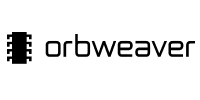1. What new market trend are you seeing so far in 2025?
In 2025, the electronics distribution industry is witnessing a significant surge in demand driven by advancements in artificial intelligence (AI), high-performance computing and automotive electrification. Heilind is playing a role in these surges with a broad portfolio of customers in industries that support EV and data centers.
2. How are geopolitical events, the rising costs of business and the labor shortage impacting your organization?
Geopolitical tensions, including trade disputes and regional conflicts, have introduced complexities in global supply chains, leading to increased costs and potential disruptions. The imposition of new tariffs has further exacerbated these challenges, resulting in higher import costs for electronic components that Heilind supplies.
Additionally, the industry is grappling with a persistent labor shortage, affecting both blue-collar workers and skilled engineers. This shortage has hampered some manufacturing capacities and has created some delays in the product development cycles.
3. What new ESG (environmental, social and governance) initiatives or plans have you put in place?
Heilind Electronics is committed to advancing its ESG objectives. Our initiatives include reducing our carbon footprint through energy-efficient operations and promoting sustainable sourcing practices.
Through a combination of our internal energy management initiatives, and externally purchased carbon credits, Heilind has been able to reduce our CO2e Intensity (per unit of sales) by 68% from 2022 vs 2024.
This is consistent with our ongoing goal to proactively manage and reduce our CO2e Intensity across our global operations.
4. What other challenges are you working through, and how are you overcoming them?
Beyond geopolitical and labor challenges, the industry is facing issues related to supply chain resilience and component shortages. To address these, Heilind is diversifying its supplier base, investing in inventory management systems and collaborating closely with partners to forecast demand accurately. These strategies aim to mitigate risks and ensure consistent product availability.
5. Where do the opportunities lie right now, and how is your company leveraging them?
Opportunities abound in sectors such as AI, 5G, automotive and industrial automation. Heilind is capitalizing on these by expanding its product portfolio to include components tailored for these applications. We are also strengthening our technical and design support teams to assist customers in integrating advanced technologies into their designs.
6. What do you see ahead for the rest of the year (any new trends, challenges, opportunities, etc.)?
The remainder of 2025 is expected to bring continued growth in AI and electrification sectors. However, challenges such as tariff-induced cost pressures and supply chain uncertainties will persist. Heilind plans to navigate these by enhancing its digital infrastructure, fostering supplier partnerships and maintaining agility in operations to adapt to market dynamics.
7. What specific challenges are you facing due to the new tariffs?
The recent implementation of elevated tariffs, including a 125% duty on certain Chinese imports, has significantly increased the cost of electronic components. This has impacted pricing strategies and necessitated adjustments in sourcing practices. Heilind is responding by optimizing import logistics and working closely with customers to manage cost implications.
Heilind Electronics remains steadfast in its commitment to delivering high-quality components and services, navigating the complexities of the current landscape with resilience and strategic foresight.








